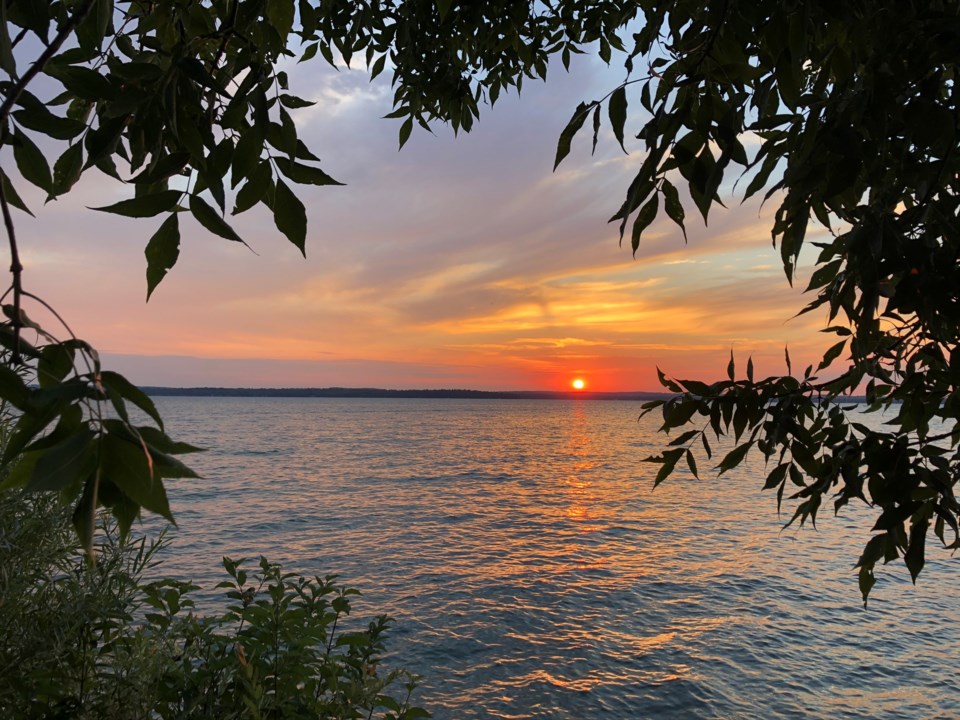NEWS RELEASE
LAKE SIMCOE REGION CONSERVATION AUTHORITY
*************************
July is Lakes Appreciation Month, and to celebrate, the Lake Simcoe Region Conservation Authority put out this quiz to test your knowledge of Lake Simcoe. Answer the questions and tally your score. The answers and what your score means follow
Lake Simcoe Quiz
- True or False: The water from Lake Simcoe travels north through Lake Couchiching
- True or False: Weeds (aquatic plants) help protect the shoreline from erosion
- True or False: Invasive species is one of the top 3 concerns for Lake Simcoe
- True or False: Lake Simcoe consists of 18 major river systems
- True or False: The earliest known name for the lake is Lake Toronto.
- True or False: Lake Simcoe’s water levels are managed by the Lake Simcoe Region Conservation Authority
- True or False: The water in Lake Simcoe is the clearest it’s been in decades
- True or False: Climate change means more phosphorus will be entering Lake Simcoe
- True or False: Not all blue-green algae are harmful
- True or False: Pulling up weeds from the lake bottom is a good way to help the lake
- True or False: You always need a permit for shoreline work
- True or False: The water from Fairy Lake drains into Lake Simcoe
Answers:
- True. Water travels from Lake Simcoe north, into Lake Couchiching and then into Lake Huron’s Georgian Bay.
- True. Weeds, or as we prefer to call them, aquatic plants, help protect the shoreline from erosion by slowing the action of waves that erode the shoreline.
- True. Invasive species is one of the top three concerns for Lake Simcoe along with climate change and phosphorus.
- True. Lake Simcoe has 18 major river systems, (Barrie Creeks, Lovers Creek, Hewitt’s Creek, Innisfil Creeks, West Holland, East Holland, Maskinonge River, Georgina Creeks, Black River, Pefferlaw River, Beaver River, Whites Creek, Talbot River, Ramara Creeks, Oro Creeks North, Hawkestone Creek, Oro Creeks South, Uxbridge Brook).
- False. The earliest known name for Lake Simcoe was “Ouentironk (pronounced oo-ent-er-onk) which is the Huron word meaning “beautiful water”. Early European settlers called it Lake Toronto. In 1793, John Graves Simcoe, the first Lieutenant-Governor of Upper Canada, renamed it Lake Simcoe, in memory of his father, Captain John Simcoe of the Royal Navy.
- False. Because Lake Simcoe is part of a much larger system known as the Trent-Severn Waterway, its water levels are managed by Parks Canada.
- True. Lake Simcoe’s water is the clearest it’s been in years. We attribute this to the invasion of zebra and quagga mussels and reductions in phosphorus concentrations. These mussels have incredible filtering capacity; they can filter a volume equivalent to that of Lake Simcoe every three days!
- True. The amount of phosphorus in the lake is associated with the amount of runoff entering the lake. Climate change means more intense rainstorms; more intense rainstorms mean more runoff; therefore, more runoff means more phosphorus entering the lake.
- True. Not all blue-green algae are harmful, BUT when blue green-algae produce harmful toxins, it’s not easy to tell without sophisticated monitoring equipment. It’s always safest to presume the toxin is present. If you suspect an algal bloom, stay out of the water and keep your pets out too. Report the bloom by calling 1-866-MOETIPS (663-8477) or TTY: 1-855-889-5775
- False. In fact, pulling up weeds from the lake bottom is illegal. Those weeds are fish habitat. You could also be making things worse by releasing tiny particles of invasive plants that can re-establish new colonies.
- True (mostly). Given the particularly sensitive nature of shorelines (lake, rivers, steams, etc.) it’s most likely you’ll need a permit if you want to do any work along your shoreline. You may also need permits from other agencies. By reaching out to us before making any plans, we can help advise you as to what is permitted. And if your plans don’t require a permit, we’ll let you know that too.
- True. Eventually all water that falls on the ground and then enters the rivers and streams in the watershed eventually makes its way to Lake Simcoe. That includes a number of towns that don’t actually border the lake, like Newmarket, as an example. Our watershed is 3,400 square kilometers and includes 20 municipal borders, from the Oak Ridges Moraine in the south to the Oro Moraine in the north, through York and Durham regions, Simcoe County and the cities of Kawartha Lakes, Barrie and Orillia.
What your score means:
If you scored 4 or below: You’re losing on the lake front. Better lake next time.
If you scored 5 - 8: You’re riding a good wave and on your way to expert lake gratitude.
If you scored 9 or more: Locked-in lake lover score!
LSRCA’s mission is to work with our community to protect and restore the Lake Simcoe watershed by leading research, policy and action.
*************************
